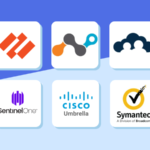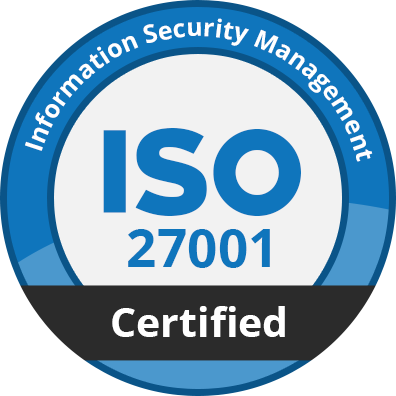Table Of Content
MSP Evolution: From Break-Fix to Agentic AI Service Delivery
-
June 18, 2025
-
The managed service provider industry has undergone three distinct evolutionary phases, each characterized by fundamental shifts in technology, business models, and service delivery approaches. Understanding the MSP evolution provides crucial context for how future-proofing strategies align with the industry’s natural progression toward more sophisticated, automated, and value-driven service models.
MSP 1.0: The Reactive Break-Fix Era (2003-2012)
- Approach: Reactive support, billed per incident
- Tools: Minimal automation, on-site service
- Revenue: Unpredictable, tied to client issues
-
Challenges:
- High operational costs
- Adversarial client relationships
- Poor scalability
Foundational Characteristics
Technology and Service Scope
Business Model Limitations
MSP 2.0: The Proactive Managed Services Era (2012-2024)
- Approach: Recurring revenue via MRR, continuous monitoring
- Tools: RMM, cloud integration, basic automation
- Services: Cybersecurity, cloud migration, IT consulting
-
Improvements:
- Predictable cash flow
- Strategic client relationships
- SLAs and performance metrics
-
Key Limitations:
- Multi-vendor sprawl (40% MSPs manage >20 vendors)
- Alert fatigue (68% alerts = false positives)
- Market shift toward unified platforms (75% buyers prefer consolidation)
Strategic Business Model Transformation
Technology Integration and Service Expansion
Operational Sophistication
Critical Business Model Limitations
Key Challenges Facing MSP 2.0:
- Multi-Vendor Complexity and Economic Inefficiency: MSPs managing multiple cybersecurity and IT vendors face escalating operational costs, with 40% managing more than 20 vendors, creating fragmented service offerings and increased complexity. Managing just five vendors can dilute focus and effectiveness significantly, while MSPs dedicate $200,000-$500,000 annually on software customization and integration. Additionally, 31% struggle to achieve unified management interfaces across multi-vendor systems.
- Automation Limitations and Alert Fatigue: Legacy IT and cybersecurity tools built for the cloud era generate excessive false positives, with 68% of security teams reporting that 25-75% of investigated alerts are false positives. Multi-vendor environments compound this problem by creating disconnected alert sources where true positives fall through the cracks. It's natural for some of these legacy systems to bring their disparate portfolio and glue them with a AI based solution, but the underlying problem of data with false positives doesn't go away.
- Market Consolidation Toward Integrated Platforms: The industry is shifting toward integrated security platforms, with vendor consolidation becoming a priority for 75% of security buyers, up from 29% in 2020. Major acquisitions like Arctic Wolf's $160 million purchase of BlackBerry's Cylance assets demonstrate how providers are building comprehensive single-platform operations. Arctic Wolf's growth to over 7,000 customers through its integrated Aurora Platform exemplifies the market's move toward unified solutions that eliminate multi-vendor complexity.
MSP 3.0: The AI-Driven Automation Era (2025-Future)
- Approach: Agentic AI + workflow automation
- Tools: Predictive analytics, AI-driven SIEM, intelligent ticketing
- Services: Subscription-based automation, business orchestration
- Focus: Business outcomes > Infrastructure support
Benefits:
- 60–80% reduction in false positives & rollout time
- Enterprise-grade security for SMBs
- Strategic advisory on automation & transformation
Artificial Intelligence as Core Infrastructure
Intelligent Service Delivery Models
MSP 3.0 Business Model Evolution
Product sales are expected to practically disappear, replaced by subscription-based automation services that generate higher margins and stronger client dependencies. The staffing model shifts toward highly skilled, well-compensated employees who combine technical expertise with business communication skills.
Cybersecurity-Centric Architecture
Strategic Navigation Framework for MSP Transformation
Assessing Your Current Position
- Technology Stack Assessment: Evaluate your current vendor portfolio complexity and integration challenges. Organizations managing more than 10 vendors typically face significant operational inefficiencies that impact profitability and service delivery quality.
- Automation Maturity Analysis: Measure your time to revenue with automation of IT tasks, cybersecurity and compliance workflows, current false positive rates and alert management effectiveness. High-performing MSPs in the transition to MSP 3.0 have reduced time to rolling out security programs, compliance certification, false positives by 60-80% through platform consolidation.
- Client Relationship Depth: Assess whether your client relationships are primarily transactional or strategic. MSP 3.0 success requires a deep understanding of client business processes and workflow optimization opportunities.
Transformation Pathways
- Platform Consolidation Strategy: Begin evaluating integrated platforms that can replace multiple point solutions. Focus on solutions that provide native AI capabilities rather than bolt-on automation features.
- Skills Development Investment: Prioritize training programs that combine technical AI/automation expertise with business consulting capabilities. MSP 3.0 success requires personnel who can translate technical capabilities into business outcomes.
- Client Portfolio Evolution: Identify clients who would benefit most from workflow automation and AI-driven services. These early adopters can provide valuable feedback and case studies for broader market expansion.
Transformation Implications for Future Success
Navigating the Path Forward
The transformation to MSP 3.0 is not merely about adopting new technologies—it’s about fundamentally reimagining how managed services create value in an AI-driven world. Those who successfully navigate this transition will find themselves positioned not just as service providers, but as essential partners in their clients’ digital futures, equipped with the tools and expertise to drive meaningful business transformation through intelligent automation and strategic technology orchestration.





